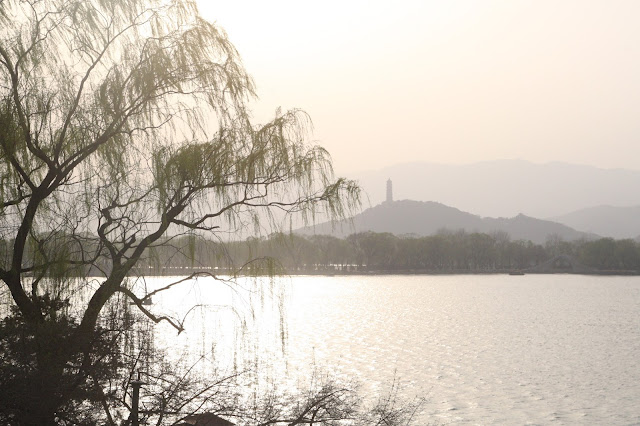Whoops. I forgot I had these posts on Beijing queued up. In my defense, I've been acclimating to life as the only foreigner in my lab. Yay science!
To read more about Beijing's tourist highlights, see:
Part 2: Summer Palace and Temple of Heaven
Part 3: Great Wall
Temple of Heaven (天坛)
Life has conditioned me to think of buildings when I hear the word "temple". The lofty Sagrada Familia in Barcelona, the mismatched towers of Chartes Cathedral in France, the domed St. Paul's Cathedral in London. The Dome of the Rock, the historical Second Temple, Angkor Wat.
As often happens in China, my expectations were confounded. While the Temple of Heaven does contain a few buildings, most of its 2.73 square kilometer area (1.05 square miles) is parkland.
天坛 (tiān tán) is better translated as "Altar of Heaven" (天 = heaven, sky; 坛 = altar). (坛 is also used for raised flower bed, circle [i.e. the literature circle], and forum) It was originally constructed in the early 1400s, concurrent with the Forbidden City, as a place for the Ming and Qing dynasty emperors to offer prayers to heaven for a good harvest. It is considered to be a Taoist (aka Daoist, depending on how you romanize the Chinese character "道", "path, way") temple.
The design of the Temple of Heaven is steeped in symbolism representing the relationship between heaven and earth and the special role played by the emperor in that relationship. In ancient China, the emperor was considered to be the son of heaven, administering to earthly matters on behalf of heavenly authority. There are three groups of buildings in the Temple of Heaven: the Hall of Prayer for Good Harvests (completely wooden, no nails); the Imperial Vault of Heaven; and the Circular Mound Altar (empty circular platform). All of the buildings have blue roof tiles, representing heaven.
Summer Palace (颐和园)
Just pictures for now.












No comments:
Post a Comment